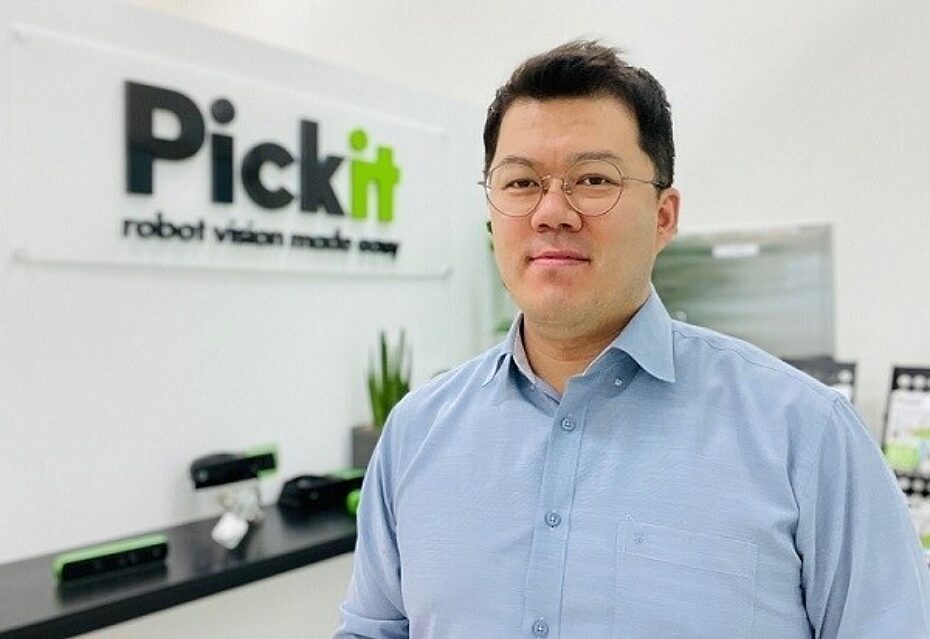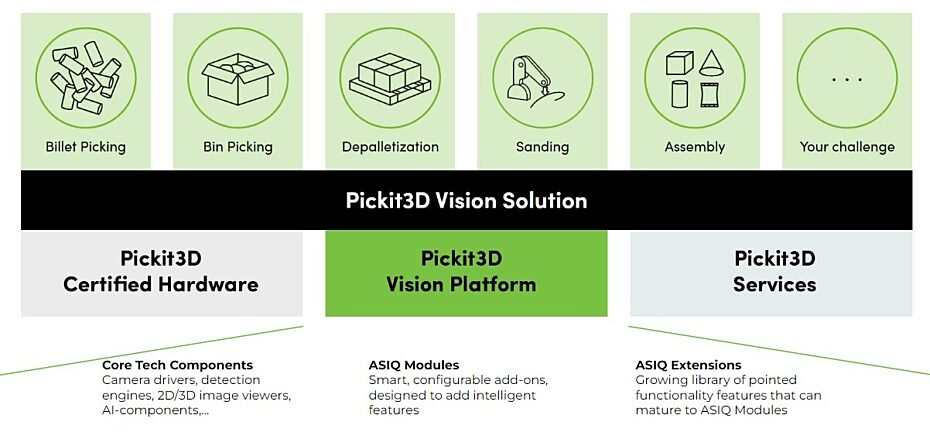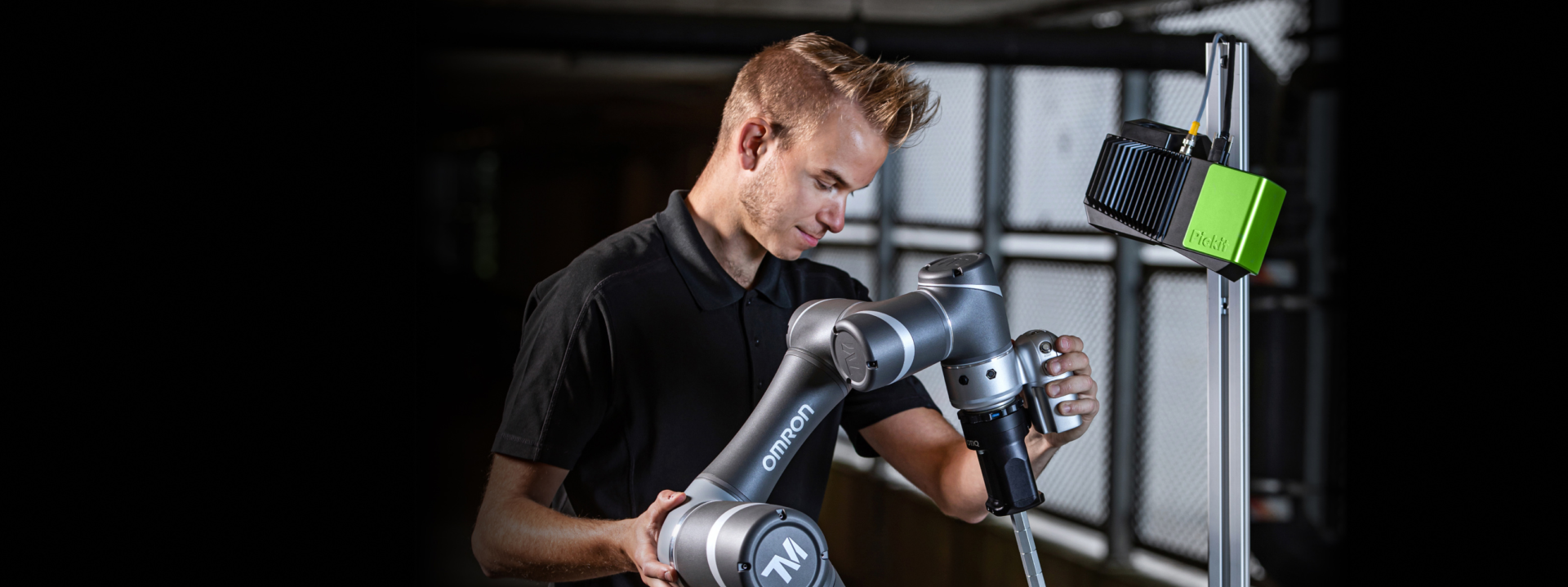“Flexibility is what drives the adoption of Pickit 3D vision”
by Jae Kyu Choi, Hello T
Pickit 3D Vision makes it easy and convenient to deploy robotic automation and maximizes flexibility, the keyword for smart factories. As 3D vision, the "eyes of the robot," is becoming an integral part of the smart factory, 3D vision specialist Pickit is being recognized as a solution leader. According to Pickit Korea’s Country Director Brian Kim, Pickit 3D Vision meets all key requirements for its customers’ automation scenarios: minimal cost, flexibility, and easy maintenance. We talked to Brian about Pickit Korea, 3D robot vision, and how the technology can become mainstream in the industry.

What kind of company is Pickit?
Brian Kim: “Pickit is a Belgium-based company specializing in 3D vision. In 2018, Pickit recognized the potential of the Korean market and started to deploy specialized staff in Korea. Given the excellent business performance in Korea, we opened a Korean branch in Hwaseong, Gyeonggi-do in 2021.
Pickit's 3D vision platform is designed to be easy to engineer for robotics SI. This enables customers to realize the automation of smart factories while the product is easy and convenient to use. The biggest advantage of Pickit's products is that all processes can be programmed through 3D vision without requiring professional coding training.”
The international situation such as the corona pandemic and the global supply chain crisis has greatly affected the manufacturing industry. How did you perform last year under these circumstances?
Brian Kim: “Pickit Korea has undergone many changes in 2022. We changed our business model, channel strategy, and promoted Pickit Korea through various channels. At the same time, we continued to develop new technologies with our major customers and support their technology development. As a result, we achieved nearly double the growth of the previous year. This is a valuable achievement that was made possible by the close cooperation between our employees and our partners. The past year has been an important one for Pickit Korea, as we have been recognized by our customers and taken another step forward in robot automation.”
What business is Pickit currently focusing on?
Brian Kim:“Pickit started its business with bin picking technology. Although bin picking has not reached its full potential in the market, we have accumulated experience in cases where companies investing in robotic automation and introducing bin picking technology have recovered their investment in a short period of time. We are proud to say that the number of robotic bin picking solutions that are being adopted is increasing every year.
Pickit is currently focusing its business on expanding the market by focusing on robot guidance. Meanwhile, we have conducted seminars, webinars, customer demos, and are actively engaged in promotional activities to accelerate the adoption of bin picking.”
You have often emphasized that 3D vision is the "eyes of the robot”. How would you describe Pickit Korea's 3D vision solution?
Brian Kim: “The Pickit 3D Vision Platform is highly precise and flexible. The platform offers a wide range of pick-and-place and guidance automation scenarios. The platform consists of three levels: core technology components, automation scenario intelligence (ASIQ), and application UI.

First, the core technology components of Pickit's Vision Platform include camera drivers, detection engines, viewers, and robot-camera calibration, many of which are developed using artificial intelligence (AI). The 'ASIQ module' of automation scenario intelligence (ASIQ) includes an expandable library and is divided into functional modules and extension modules. Functional modules are standard configurable smart add-ons that are designed to add intelligence to multiple automation scenarios. Extension modules are specific smart extensions designed to add point functionality to a single automation scenario. For example, assembly, sealing, gap inspection, depalletizing, and sanding are examples of extension modules. Finally, the application UI of the Pickit solution is configured in the most effective and intuitive way to maximize user convenience.”


Do you have any memorable examples of implementing 3D vision robot automation with Pickit solutions?
Brian Kim: ”I can mention three cases. First, a bin picking application for an automotive bearing parts company. The technology was applied to the task of removing thin, small ring-shaped parts out of the bin. The customer was very satisfied with the usability, and the ROI (return on investment) was excellent, averaging one year and two months. Additional supply contracts are in progress.
Another example of a robot guidance solution is the realization of fueling automation in the aerospace industry. Robotic guidance was implemented to locate aviation fueling stations, which are difficult to find because they are not fixed, with a 'Pickit M camera'. This technology is expected to be applied to electric vehicle charging facilities in the future.
Lastly, this case is also an example of a robot guidance solution for precision machining and welding of pipes. Due to the confidentiality agreement with the customer we cannot go into detail, but it is a representative example of robot automation implementation by Pickit.”
In what areas do you think the Pickit 3D Solution will be utilized in the future?
Brian Kim: “Because of its ease of use, we expect it to stand out in the fields of 'industrial robot automation' and 'collaborative robot automation'.
In the field of industrial robot automation, complex teaching processes can be minimized. This is because once the first teaching operation is performed, no further teaching is required. Another strength is the ability to facilitate product changes. Customers can then benefit from a pick-and-place solution that minimizes their footprint, reduces downtime, and minimizes engineering costs.
For customers adopting collaborative robot automation, it is easy to teach and convenient to apply compared to industrial robots, but when introducing a vision system, engineering time and costs are high. In this case, Pickit's 3D vision has a lot of advantages for robot engineers. Collaborative robots are characterized by their freedom of movement and flexibility, and Pickit's 3D vision solution can maximize the advantages of collaborative robots and respond to various environments.”
Until now, you have been marketing Pickit through the application of Pickit solutions in large enterprises. Do you have a sales strategy for small and medium-sized enterprises?
Brian Kim: “It may seem that way because we have mainly presented applications for Hyundai Motor and LG Electronics. However, more than 50% of Pickit Korea's sales have been to small and medium-sized manufacturing companies. In particular, when small and medium-sized manufacturing companies introduce robots that minimize existing feeders or machinery, our solutions have always been highly beneficial. In fact, there are many companies that have realized faster ROI by minimizing or eliminating related machinery after introducing 3D robot vision. In addition, in the case of small and medium-sized manufacturing companies, the manpower to manage robots and vision is actually scarce, so Pickit saves a lot of time and money in terms of management, minimizing robot teaching and making it easier to change products.”
What would you like to say to future potential customers who are considering adopting 3D vision solutions?
Brian Kim: “In the future, our platform will include a wide range of features. Our solutions are not just limited to vision systems with cameras and processors. We want to reach out to our customers with a high-tech solution that provides optimization modules for each application scenario, centered on the Pickit software platform.
In the future, the company plans to develop a solution that minimizes the robot teaching process. If our vision is realized, the robotic teaching process will be eliminated in the future 3D vision industry.”
What is your outlook for the 3D vision market this year?
Brian Kim: “According to market research reports, the average annual growth rate of the 3D vision market is about 10-15%. Pickit Korea expects to achieve an annual growth rate of 30% this year, which is double the expected figure. As smart automation that does not require teaching is expected to be implemented in various robot automation projects in the future, we believe that the growth trend of the 3D vision market is limitless.”
Looking forward to the future of Pickit Korea…
Brian Kim: “For this year's slogan, 'The Next level of Robot Automation,' we plan to actively introduce digital and data-centered software technology to realize the so-called digital twin and advance robot automation. Through this, we will strive to become the core of the robot automation solution that strengthens the competitiveness of the Korean manufacturing industry.”
This article appeared on HelloT. The original Korean version can be found here.
